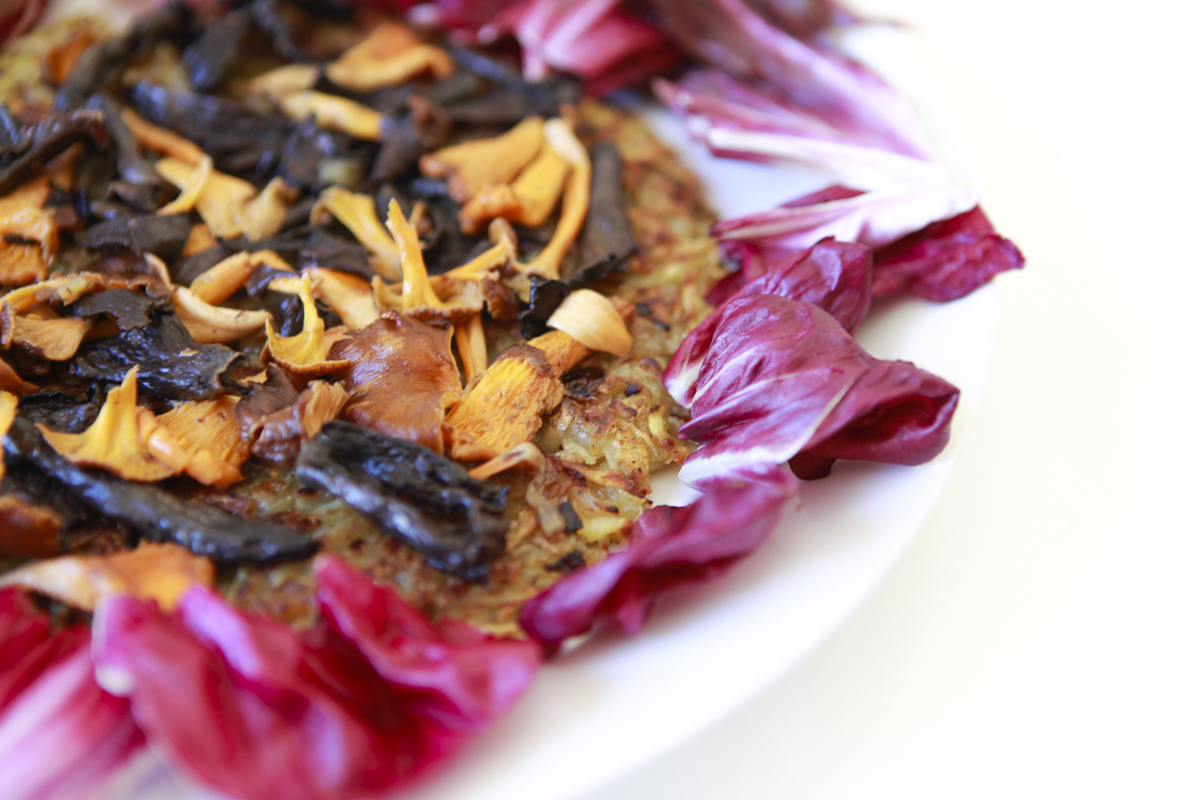This past weekend, I crossed the rösti divide.
Though the name may conjure images of narrow mountain-pass or swift-and-icy ravine, in substance it’s far less dramatic than that. It’s the cultural border between the French-speaking side of Switzerland and the German-speaking one and also heaving plate of, what us Americans would term as, hash browns.
Shredded potatoes fried in animal fat, sometimes topped with an Alpine cheese, or an egg, or Speck (or, depending on the contents of your fridge, all three); a farmer’s breakfast that suits its mountainous terrain with assurance and compliments this transitional season with its comforting qualities.
Late summer’s shift toward fall, while characterized by abundance, moves inward: daylight wanes, the wind quickens, leaves and fruits fall, grasses dry, cows are taken down from mountain pastures, the last of the season’s crops are harvested and stored; the preparation for winter’s stillness begins and the desire for comforts–from what’s on our feet (hand-knit woolens, please) to what’s on our plates–deepens.
According to Chinese Medicine’s theory of the five elements and their corresponding seasons, Fall corresponds to the Metal Element, the lungs and yin energies. Yin can be thought of as contracting energy, receptive and passive as the moon; it follows that foods with yin qualities are grounding–warming and deeply nourishing like slow-roasted beets or brothy soups. The lungs are said to be negatively affected by unresolved grief and sadness and positively affected by yin energies including comfort foods like the dear potato.
Yin Potato
The shift toward Fall brings a shift in the Northern Hemisphere’s farmer’s markets. The bright jewels–berries, apricots, tomatoes–of summer wane and are replaced by the substantial, soil-covered root vegetables of winter cellars. With an ever-increasing variety of foods available to us regardless of region or season, many of these modest vegetables are overlooked in favor of something snazzier: for who among us would choose a regular potato when a sweet one is an option?
Not to belittle sweet potatoes but as they require a warmer climate than Geneva offers I’d like to sing the potato’s praises for a while. The potato has suffered an unfair reputation in the health-conscious community due to its status as “comfort food“: the potato chip, the pomme frite, the double-chili-cheese fry. We seem to have mistaken convenience for comfort and in the process have discredited one of the most nourishing, truly comforting foods around.
The potato, when eaten with its skin on, is high in fiber, B-vitamins–namely B6, B3 and B5, vitamin C, potassium, manganese and copper. It contains a variety of phytonutrients–carotenoids, flavonoids and caffeic acid–that act as antioxidants, protecting against free radical damage. The potato helps build and maintain body tissues, reduce bodily inflammation, promote healthy digestion and elimination, strengthen immunity and even ward off carcinogens.
My version of rösti forgoes the Alpine cheese and Speck for my favorite food-ally of the approaching season, another yin food: wild-foraged mushrooms. The turmeric-yellow, woodsy-delicate, butter-pat-softness of the Chanterelle, the smokey-black, earthy-dark-firmness of the Black Trumpet; to me, they are an emblem of the season.
Das rösti ist tip-top!
Ingredients Directions


